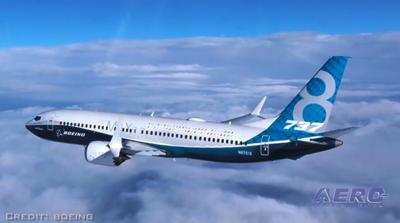Sat, Nov 21, 2020
AD 2020-24-02 Applies To All The Boeing Company Model 737-8 and 737-9 (737 MAX) Airplanes
The FAA is superseding Airworthiness Directive (AD) 2018-23-51, which applied to all The Boeing Company Model 737-8 and 737-9 (737 MAX) airplanes.

AD 2018-23-51 required revising certificate limitations and operating procedures of the Airplane Flight Manual (AFM) to provide the flightcrew with runaway horizontal stabilizer trim procedures to follow under certain conditions. This AD requires installing new flight control computer (FCC) software, revising the existing AFM to incorporate new and revised flightcrew procedures, installing new MAX display system (MDS) software, changing the horizontal stabilizer trim wire routing installations, completing an angle of attack (AOA) sensor system test, and performing an operational readiness flight. This AD also applies to a narrower set of airplanes than the superseded AD, and only allows operation (dispatch) of an airplane with certain inoperative systems if specific, more restrictive, provisions are incorporated into the operator's existing FAA-approved minimum equipment list (MEL). This AD was prompted by the potential for a single erroneously high AOA sensor input received by the flight control
system to result in repeated airplane nose-down trim of the horizontal stabilizer. The FAA is issuing this AD to address the unsafe condition on these products. This AD is effective November 20, 2020.
Supplementary Information: The FAA issued a notice of proposed rulemaking (NPRM) to amend 14 CFR part 39 and supersede AD 2018-23-51, Amendment 39-19512 (83 FR 62697, December 6, 2018; corrected December 11, 2018 (83 FR 63561)) (AD 2018-23-51). AD 2018-23-51 applied to all Boeing Model 737-8 and 737-9 (737 MAX) airplanes. The NPRM proposed to apply only to the 737 MAX airplanes identified in Boeing Special Attention Service Bulletin 737-31-1860, dated June 12, 2020, which identifies line numbers for airplanes with an original airworthiness certificate or original export certificate of airworthiness issued on or before the effective date of the original Emergency Order of Prohibition. Airplanes that have not received an original airworthiness certificate or original export certificate of airworthiness on or before the date of the original Emergency Order of Prohibition will have been modified to incorporate the changes required by this AD prior to receiving an original, or original export,
airworthiness certificate.

The NPRM published in the Federal Register on August 6, 2020 (85 FR 47698). The NPRM was prompted by the potential for a single erroneously high AOA sensor input received by the flight control system to result in repeated airplane nose-down trim of the horizontal stabilizer. To address this unsafe condition, the NPRM proposed to require installing new FCC software, revising the existing AFM to remove the AFM revisions required by AD 2018-23-51 and to incorporate new and revised AFM flightcrew procedures, installing new MDS software, changing the horizontal stabilizer trim wire routing installations, completing an AOA sensor system test, and performing an operational readiness flight. The NPRM also proposed to allow operation (dispatch) of an airplane with certain inoperative systems only if certain more restrictive provisions are incorporated into the operator's existing FAA-approved MEL.
More News
Terminal Radar Service Area Airspace surrounding designated airports wherein ATC provides radar vectoring, sequencing, and separation on a full-time basis for all IFR and participa>[...]
Very High Frequency (VHF) The frequency band between 30 and 300 MHz. Portions of this band, 108 to 118 MHz, are used for certain NAVAIDs; 118 to 136 MHz are used for civil air/grou>[...]
“From approximately November 2021 through January 2022, Britton-Harr, acting on behalf of AeroVanti, entered into lease-purchase agreements for five Piaggio-manufactured airc>[...]
Also: Virtual FLRAA Prototype, IFR-Capable Autonomous A/C, NS-32 Crew, Golden Dome Missile Defense Bombardier announced that the first production Global 8000 successfully completed>[...]
Aero Linx: The 1-26 Association (Schweizer) The Association’s goal is to foster the helpfulness, the camaraderie, and the opportunity for head-to-head competition that is fou>[...]
 ANN's Daily Aero-Term (05.29.25): Terminal Radar Service Area
ANN's Daily Aero-Term (05.29.25): Terminal Radar Service Area ANN's Daily Aero-Term (05.30.25): Very High Frequency (VHF)
ANN's Daily Aero-Term (05.30.25): Very High Frequency (VHF) Aero-News: Quote of the Day (05.30.25)
Aero-News: Quote of the Day (05.30.25) Airborne 05.23.25: Global 8000, Qatar B747 Accepted, Aviation Merit Badge
Airborne 05.23.25: Global 8000, Qatar B747 Accepted, Aviation Merit Badge ANN's Daily Aero-Linx (05.30.25)
ANN's Daily Aero-Linx (05.30.25)




